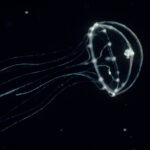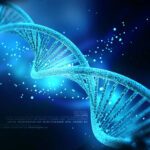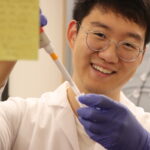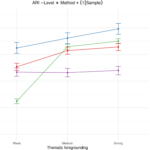Jellyfish are just one species within the phylum cnidaria. A phylum is a broad level of taxonomic classification that includes many different species, with cnidaria additionally including coral and anemones. Cnidaria provides comparative neuroscience information due to the simple behaviors that the species within the phylum exhibit. Despite their shared phylum that creates nerve cells […]
Main Content
Chemistry and Biochemistry

Floating Systems: Jellyfish and Evolving Nervous Systems
Jellyfish are just one species within the phylum cnidaria. A phylum is a broad level of taxonomic classification that includes many different species, with cnidaria additionally including coral and anemones. Cnidaria provides comparative neuroscience information due to the simple behaviors that the species within the phylum exhibit. Despite their shared phylum that creates nerve cells […]
Computer Science and Tech

Biological ChatGPT: Rewriting Life With Evo 2
By Jenna Lam
What makes life life? Is there underlying code that, when written or altered, can be used to replicate or even create life? On February 19th 2025, scientists from Arc Institute, NVIDIA, Stanford, Berkeley, and UC San Francisco released Evo 2, a generative machine learning model that may help answer these questions. Unlike its precursor Evo […]
Environmental Science

Airborne Bacteria: A Hidden Regulator of Ocean Blooms
By Ella Scott
Context Marine phytoplankton are microscopic algae integral to oceanic ecosystems and global biogeochemical cycles. They contribute significantly to the process of carbon displacement into the deep ocean and primary production, forming the foundation of the marine food web. However, these phytoplankton populations are vulnerable to various environmental and biological stressors, including temperature changes, nutrient availability, […]
Math and Physics

Coronal Bright Points As a Solution to the Sun’s Coronal Heating Problem
By Anna Chen
As the star closest to the planet we call home, the Sun is heavily researched for its impact on the Earth and as a model for the dynamics of stars further out. One of the most prominent and vexing questions in modern helio science is the coronal heating problem. Our common sense and everyday experiences […]
Psychology and Neuroscience

Motor Brain-Computer Interface Reanimates Paralyzed Hand
Honors Projects

Daniel Kang in the Spotlight

Biological ChatGPT: Rewriting Life With Evo 2
What makes life life? Is there underlying code that, when written or altered, can be used to replicate or even create life? On February 19th 2025, scientists from Arc Institute, NVIDIA, Stanford, Berkeley, and UC San Francisco released Evo 2, a generative … Read Full Article about Biological ChatGPT: Rewriting Life With Evo 2

Unsupervised Thematic Clustering for Genre Classification in Literary Texts
Summary In the last decade, computational literary studies have expanded, yet computational thematics remains less explored than areas like stylometry, which focuses on identifying stylistic similarities between texts. A 2024 study by researchers from the Max … Read Full Article about Unsupervised Thematic Clustering for Genre Classification in Literary Texts

Motor Brain-Computer Interface Reanimates Paralyzed Hand
Over five million people in the United States live with paralysis (Armour et al., 2016), representing a large portion of the US population. Though the extent of paralysis varies from person-to-person, most with paralysis experience unmet needs that subtract … Read Full Article about Motor Brain-Computer Interface Reanimates Paralyzed Hand
